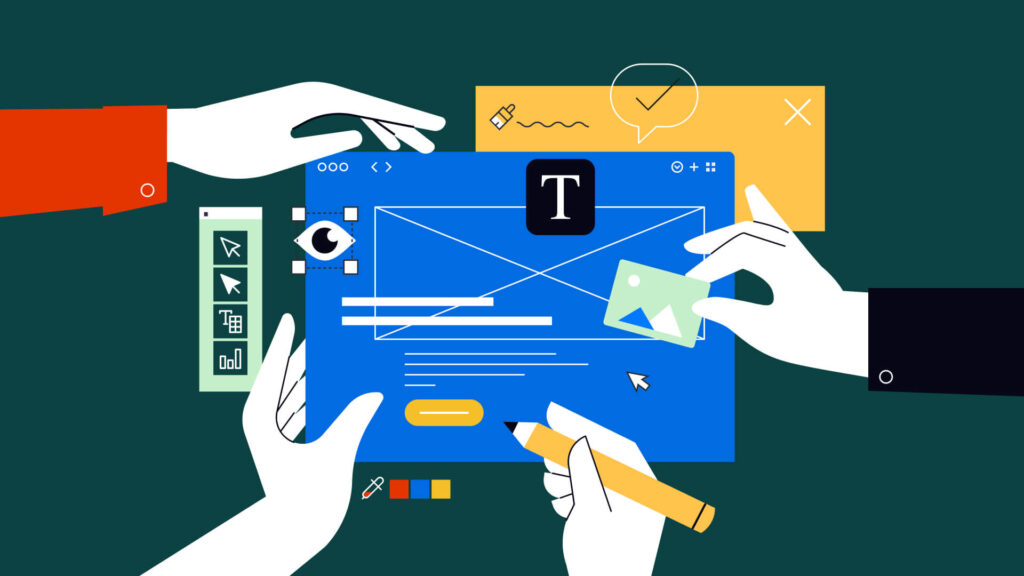Times are changing.
We’re in the midst of a generational shift as the millennial demographic loses buying power to the tech-savvy Gen Zs.
Born between 1997 and 2012, Gen Zs are estimated to have an annual spending power of $144 billion. That’s a lot of cash.
But if you want a piece of that pie, you’ve got to shift, too. And design is a powerful tool to help you do it. Building a brand identity that resonates with Gen Z is no longer optional, it’s essential.
Different perspectives and a digital upbringing mean that the Gen Z market responds to brands very differently compared to their millennial predecessors. They move fast, value authenticity, and aren’t afraid to call you out (very publicly) if you make a wrong move.
In this article, we’ll share 8 actionable ways you can approach design to win over this entirely new generation (and not get canceled).
1. Design with Responsiveness in Mind
Tech-savvy Gen Z’s are online over 10 hours per day. They’re multi-taskers, constantly switching devices to consume media, services, and products.
To win them over, your brand must offer a seamless experience at every touch point, especially on mobile. The entire generation has had a cell phone since they were eight, and statistics from American Express show that 23% of them will drop a brand that’s not mobile-friendly.
Pro tip: Invest in UX (user experience) design to ensure your website and digital assets are optimized for all devices.
2. Design for Shareability and Short Attention Spans
As the online generation, a staggering 94% of Gen Z use social media, and 50% are active daily.
We’re comfortable with designing for social media, but Gen Z sees their social media profiles as extensions of themselves, a digital representation of their identity.
They’re quick to share content from brands that enhance their online persona, yet equally quick to unfollow if they don’t connect with you.
Your designs need to be instantly shareable to keep up with famously short attention spans.
- Bite-sized information
- Legible fonts on small screens
- Unconventional colors
- Clear messaging
If they need to stop and figure out what you’re offering, you’ve lost them.
3. Cut the Fluff
Aesthetics are important to Gen Z, but so are clarity and function.
If your product or service looks good but doesn’t work, or is hard to use, expect negative reviews and fast…
They’re the first generation to grow up entirely with technology, so they’re less impressed by novelty.
4. Design with Intention and Showcase Your Values
More than any generation before, Gen Z is attuned to a brand’s agenda. You must showcase your values (and stand for something) if you’re going to win their hearts.
Design is a great tool to do this.
It could be as simple as designing environmentally friendly packaging, or as complex as building an app that allows them to share their fight for human rights.
Global issues like climate change are important to them, so they’ll opt for brands that design for social good.
Diversity is key! The Gen Z demographic is 48% minority, so practice diversity and inclusion in your designs. From photography to illustrations, be aware of cultural connotations and champion representation.
But do so authentically and honestly. Gen Z can spot inauthenticity a mile away.
5. Bring Them Into the Design Process
Want to encourage engagement with your brand? Bring Gen Z into your design process.
As a generation, they’re eager to interact with brands they like. 44% of those studied in Gen Z Brand Relationships said they’d willingly submit ideas for product designs.
Want to know what design style they like? Ask them. Try a social media poll between two designs for starters.
6. Be Cohesive and Reliable with Your Designs
Consistent and cohesive branding is important to Gen Z.
Why? Because they’ve grown up surrounded by instability.
Economic uncertainty, cyberbullying, and global lockdowns mean they look for reliability in the brands they interact with.
Consistency and repetition will help make you memorable, especially in saturated markets like e-commerce and fast-moving consumer goods (FMCG).
Looking for tips on color strategy and visual cohesion? Check out our guide on how to choose brand colors that captivate and convert.
7. But Be Fluid
On the flip side of consistency, Gen Z needs you to be fluid, too.
The world is always changing, and brands should keep up. Stay flexible and adapt your designs as needed—without losing sight of your overall identity.
How do you do that?
Subtle tweaks and changes that reflect the current climate can work in your favor. Seasonal design elements, pop culture references, and trending visual motifs keep you relevant.
Gender neutrality is essential. Gen Z is breaking down barriers like never before, so avoid stereotypes in your visuals and messaging.
8. Don’t Fear Experimental Design
Growing up surrounded by media means Gen Z is hard to surprise. It’s not easy to present something new.
But that means you can be experimental with your designs and still see results. In fact, the demographic needs the unexpected to win its attention.
- Bold colors (they even have their own Pantone: Gen Z Yellow)
- Unique pairings
- Unusual imagery
Unsurprisingly, their digital habits mean Gen Z seeks out analog aesthetics, think retro styles, 90s influences, and grainy filters that feel more tangible and ‘real life.’
Have You Considered How Your Designs Need to Shift?
If you need support from a global team of professional and vetted designers, with skills from UX to animation to packaging, get in touch with Design Force today. We’ll help give your brand a Gen Z-approved ‘glow up’.



